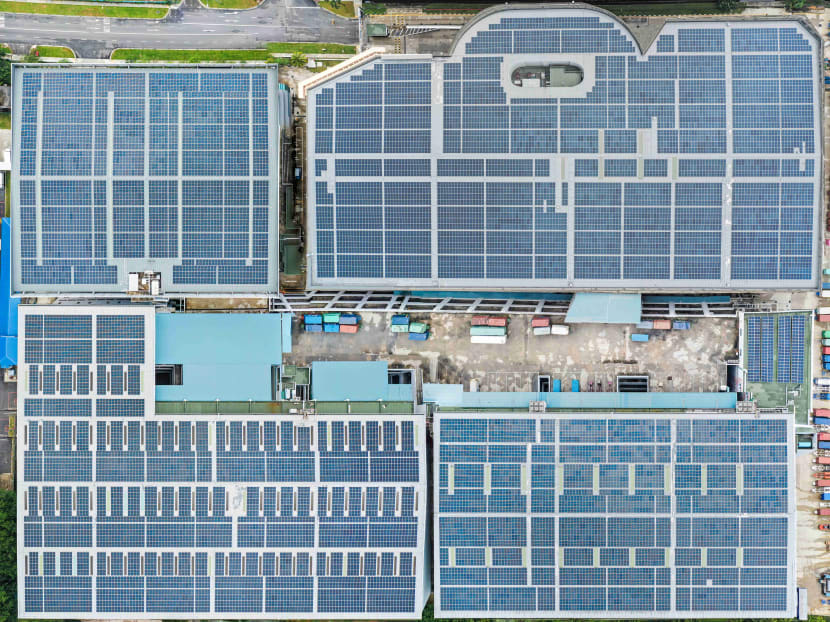Singapore achieves 2020 solar target, enough to power 60,000 households a year
SINGAPORE — Just in time for Earth Day, Singapore has met its 2020 solar target of 350 megawatt-peak (MWp) — roughly enough to power 60,000 households a year, the Energy Market Authority (EMA) and JTC Corporation said on Wednesday (April 22).

Aerial view of the solar installations at 40 Penjuru Lane.
SINGAPORE — Just in time for Earth Day, Singapore has met its 2020 solar target of 350 megawatt-peak (MWp) — roughly enough to power 60,000 households a year, the Energy Market Authority (EMA) and JTC Corporation said on Wednesday (April 22).
The target was set in 2010 and this achievement brings Singapore a step closer to achieving its 2030 ambition of producing at least 2 gigawatt-peak (GWp) of solar energy, which would be enough to power about 350,000 households a year, they said.
In their statement, both EMA and JTC credited the completion of a 6MWp rooftop solar installation of a CapitaLand industrial facility at 40 Penjuru Lane with helping to push Singapore across the 350MWp mark.
Solar energy, they noted, is one of the “key switches” for Singapore to create a cleaner, affordable and more reliable energy future.
It is also Singapore’s most viable source of renewable energy, said EMA chief executive Ngian Shih Chun.
“In our efforts towards greater sustainability to tackle climate change, Singapore will increase solar adoption,” he said. “We will press on towards the next solar target of at least 2GWp by 2030 and will continue to work with our stakeholders to make this possible.”
RAMPING UP SOLAR DEPLOYMENT
The joint statement also gave updates about JTC’s plans to extend two of its solar initiatives to optimise the use of over 740,000sqm of industrial land and roof space, which is equivalent to about 103 football fields.
They said that the next phase of JTC’s SolarLand programme and the SolarRoof programme is estimated to contribute over 82MWp of solar energy capacity towards the 2030 national target. It will generate about 78,000 megawatt-hours of electricity to power over 14,600 households and reduce over 32,000 tonnes of carbon emissions per year.
Started in May last year, the SolarLand initiative uses mobile substations and solar photovoltaic systems that can be relocated to alternate sites, should the land be needed for other uses.
Following the rollout of the first two phases at Jurong Island and Changi Business Park, JTC issued a tender for the third phase of the initiative in February this year.
EMA and JTC said this will maximise the use of over 560,000sqm of temporary vacant land all across Singapore to deploy more than 67MWp of solar energy capacity.
Meanwhile, plans are in the works to have more solar panels on JTC’s industrial rooftops.
The SolarRoof programme, which was introduced in 2016, enables the direct export of solar electricity generated from rooftops to the national power grid.
To better use industrial roof space, EMA and JTC said that a tender will be introduced in the first half of this year for the second phase of this programme to create an additional 15MWp of solar energy capacity.
“Besides JTC’s industrial buildings, JTC is also exploring to allow its lessees to tap the new contract for solar panel installations on their own rooftops,” they said.
The aim of this, said EMA and JTC, is to “further catalyse” the adoption of solar deployment across Singapore’s industrial estates.
JTC’s group director of engineering Calvin Chung said: “Through these efforts, we hope to reduce the carbon footprint and optimise the use of industrial land and roof spaces by installing solar panels to contribute clean energy to Singapore.”








